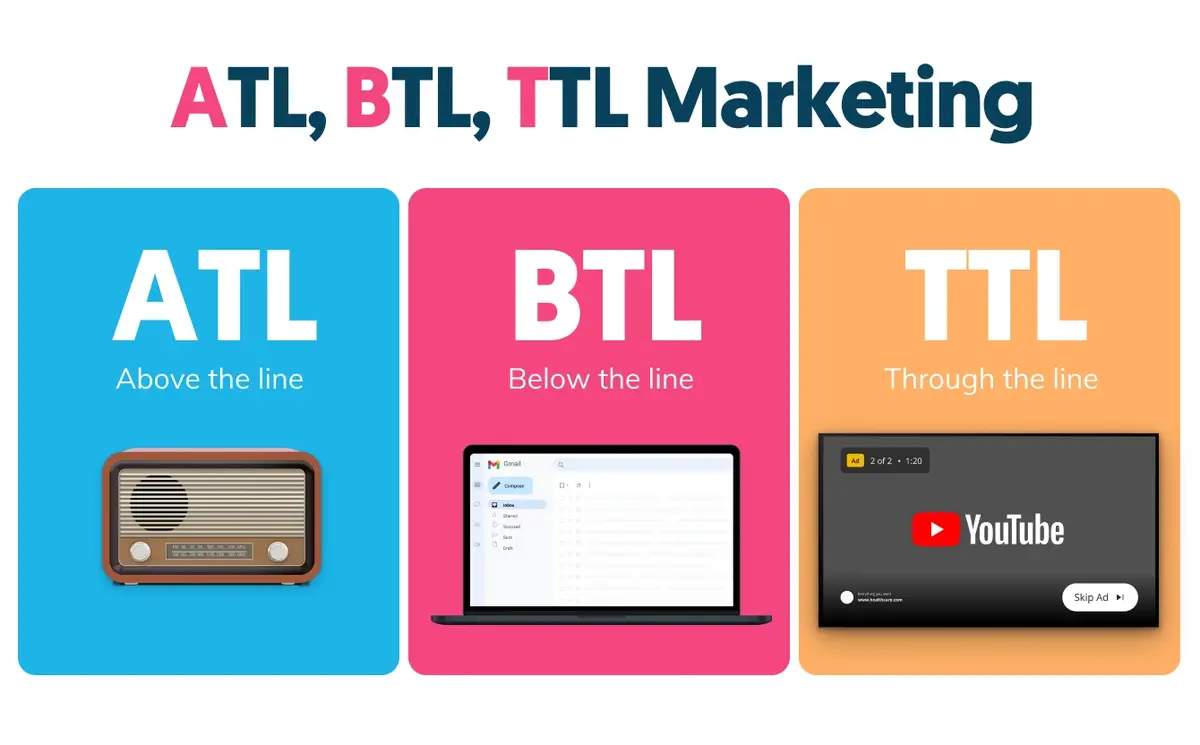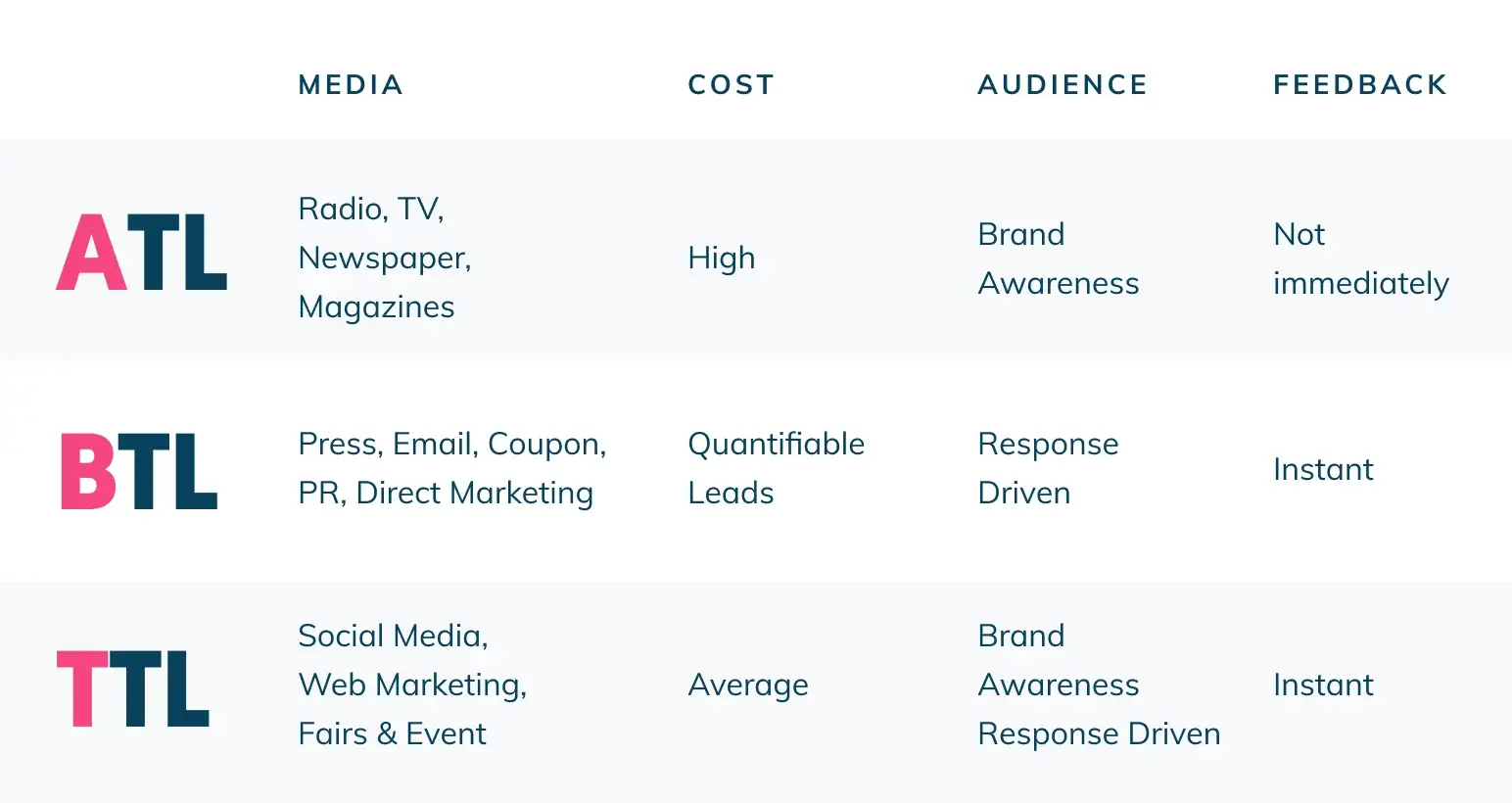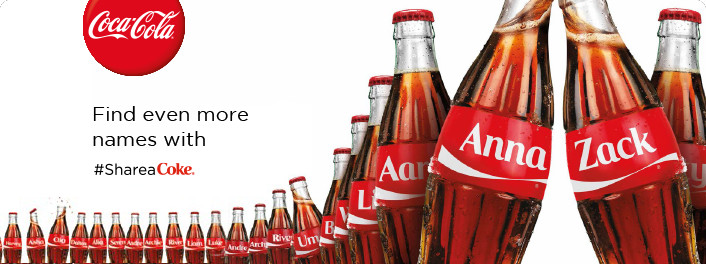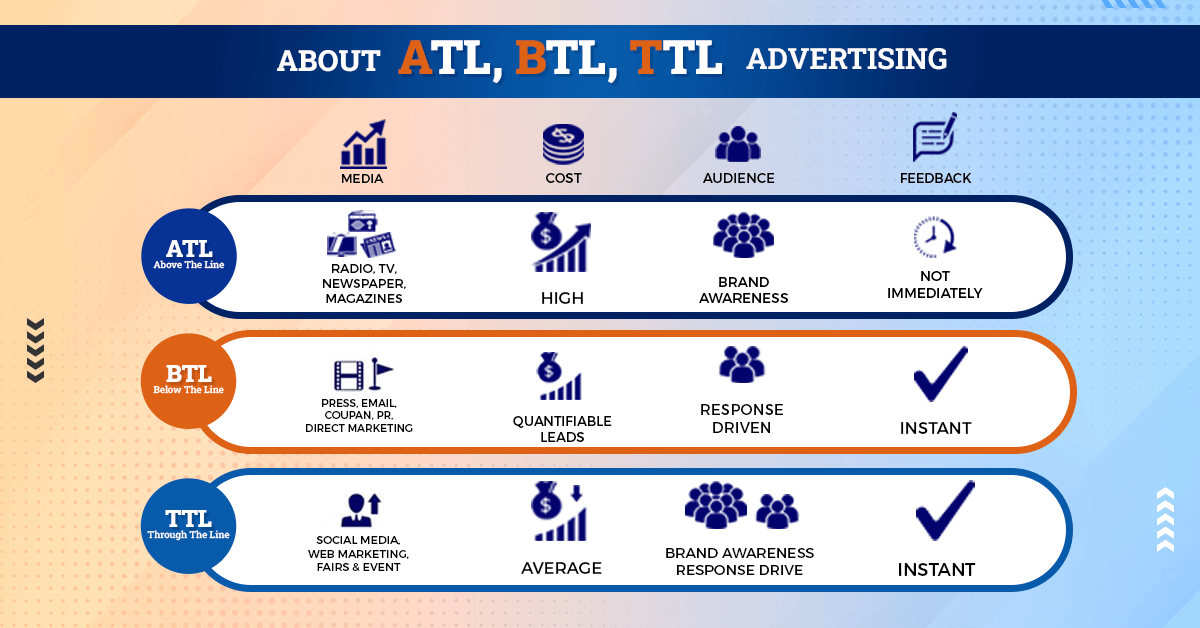Understanding ATL, BTL, and TTL Marketing Strategies
Looking to increase brand awareness and visibility? Learn all about ATL, BTL, And TTL Marketing with our Ultimate guide for 2024.

ATL, BTL, and TTL are three distinct marketing strategies that companies use to promote their products or services. Each approach has its unique strengths and weaknesses, and understanding how they differ can help businesses create effective marketing campaigns.
Short answer
What are the definitions for ATL, BTL, and TTL marketing
- ATL stands for: “Above the Line” marketing, which refers to a form of marketing that targets a wide audience through mass media such as television, radio, and newspapers.
- BTL stands for: “Below the Line” marketing, which is a more targeted and direct approach to marketing. BTL marketing activities include promotional events, direct mail campaigns, and targeted advertising.
- TTL stands for: “Through the Line” marketing, which combines the above two methods. It involves using both ATL and BTL marketing strategies to create a comprehensive, integrated campaign that targets a wide range of consumers across multiple channels.

What is ATL marketing?
Short answer
ATL marketing definition
ATL (Above the Line) marketing refers to a form of marketing communication that uses mass media channels such as television, radio, print, outdoor advertising, and online media to reach a wide audience.
ATL marketing is a type of marketing strategy that targets a large audience through mass media channels such as television, radio, newspapers, and billboards. This approach is often used by companies to create brand awareness and promote their products or services to a wide audience.
ATL marketing typically involves the use of broad-based advertising campaigns that are designed to reach as many people as possible. This can include creating TV commercials, radio ads, or print advertisements that are distributed to a large audience.
Advantages & Disadvantages of ATL Marketing Campaigns
- One of the major advantages of ATL marketing is that it can generate significant exposure for a brand or product. By using mass media channels, companies can reach a large number of people quickly and effectively.
On the other hand:
- This approach can also be expensive, and it can be challenging to measure the effectiveness of the campaign.
Overall
Overall, ATL marketing can be an effective way for companies to create brand awareness and reach a large audience. However, it is important to carefully consider the target audience and the goals of the campaign to determine if this approach is the most effective option.
Top 3 examples of successful ATL marketing campaigns
Following are the Top 3 most famous examples of effective ATL marketing:
1. Coca-Cola’s “Share a Coke” campaign:
Coca-Cola’s “Share a Coke” campaign is a prime example of successful ATL marketing. The campaign involved personalizing Coke bottles and cans with popular names, allowing customers to purchase bottles with their names or their loved ones’ names on them. This campaign was widely successful and resulted in increased sales and brand recognition for Coca-Cola.
Watch this legendary Share a Coke campaign Video by Coca-Cola

2. Nike’s “Just Do It” campaign:
Nike’s “Just Do It” campaign is another classic example of successful ATL marketing. The campaign featured famous athletes, including Michael Jordan and Bo Jackson, in ads that encouraged people to be active and pursue their dreams. The campaign helped Nike become one of the most recognizable and successful sportswear brands in the world.
Watch the Nike’s “Just Do It” History video by Sportology

Video by: Sportology
3. Apple’s “Think Different” campaign:
Apple’s “Think Different” campaign is a memorable example of successful ATL marketing that focused on brand messaging rather than product features. The campaign featured iconic figures such as Albert Einstein, Mahatma Gandhi, and Martin Luther King Jr., and encouraged people to think differently and be innovative. The campaign helped Apple to reposition itself as a brand that was not just selling computers but was also promoting a way of thinking and living.
Watch this iconic Video of Steve Jobs introducing “Think Different” on 09/23/1997

What is BTL marketing?
Short answer
BTL marketing definition
BTL marketing stands for “Below the Line” marketing, which refers to promotional activities that are targeted to a specific audience, typically using direct or personal channels of communication.
BTL marketing, also known as Below-the-Line marketing, refers to a type of marketing that focuses on targeted and personalized communication with individual customers or small groups.
BTL marketing strategies typically include activities such as direct mail, email marketing, experiential marketing, promotional events, and point-of-sale advertising. These activities are designed to reach specific audiences with customized messages that encourage them to take specific actions, such as making a purchase or engaging with a brand on social media.
Advantages & Disadvantages of BTL Marketing Campaigns
- BTL marketing campaigns offer several advantages that make them an attractive option for businesses. Firstly, BTL campaigns can be designed to fit smaller budgets, making them a cost-effective way to market products or services. Additionally, BTL campaigns can be targeted toward specific audiences, increasing the likelihood of generating leads and conversions.
- BTL campaigns can also be easily tracked and measured, allowing marketers to evaluate their effectiveness and make necessary adjustments. Personalization is another advantage of BTL campaigns, as they offer a more personalized approach to marketing that can help build stronger relationships with customers.
However:
- BTL campaigns also have some disadvantages that businesses need to consider. For instance, BTL campaigns have a limited reach compared to ATL campaigns since they are targeted toward specific audiences. This can limit brand visibility and recognition, which may impact long-term marketing objectives.
- BTL marketing campaigns may also be time-consuming to design and execute, as they often require a more personalized approach to detail.
BTL marketing approach for email marketing campaigns
BTL marketing is a highly effective approach for email marketing campaigns as it allows for personalized and targeted messaging to specific groups of customers. Here are some examples of BTL email marketing strategies:
- Welcome emails: When someone signs up for a company’s email list, they often receive a welcome onboard email. This type of email is a great opportunity for BTL marketing, as it allows companies to provide a personalized message to new subscribers. Welcome emails can include a special offer or coupon code to encourage subscribers to make their first purchase.
- Abandoned cart emails: When a customer adds items to their online shopping cart but doesn’t complete the purchase, companies can send an abandoned cart email. These emails are a form of BTL marketing, as they are targeted to customers who have already shown an interest in the company’s products. Abandoned cart emails can include a reminder of the items in the customer’s cart, along with a special offer or discount to incentivize them to complete their purchase.
- Birthday or anniversary emails: Companies can also use BTL marketing to send personalized emails to customers on their birthdays or anniversary of signing up for the email list. These emails can include a special offer or discount, or simply a message wishing the customer a happy birthday or thanking them for being a loyal customer.
- Re-engagement emails: BTL marketing can also be used to re-engage or “Win Back” customers who haven’t interacted with a company’s emails in a while. These emails can include a special offer or incentive to encourage the customer to re-engage with the brand.
Overall, BTL marketing in email marketing allows companies to create customized and targeted messages that resonate with specific groups of customers, leading to increased engagement, loyalty, and sales.
BTL & Email signature marketing
Email signature marketing is a form of BTL marketing that involves including marketing messages or calls-to-action (CTAs) in email signatures.
Here are some key features of email signature marketing as a BTL marketing strategy:
- Personalization: Email signature marketing allows for personalized messaging that is targeted to the specific recipient of the email. This can include CTAs that are relevant to the recipient’s interests or needs.
- Brand consistency: Including marketing messages or CTAs in email signatures can help to reinforce the company’s brand identity and messaging with every email sent.
- Increased visibility: Email signatures can increase the visibility of the company’s marketing messages, as the email signature is visible in every email sent by the company.
- Cost-effectiveness: Email signature marketing is a cost-effective BTL marketing strategy, as it does not require additional marketing materials or advertising spend.
- Call-to-action: Including a clear call-to-action in the email signature can encourage recipients to take a specific action, such as visiting the company’s website or social media pages.
Create a Free Email signature with WiseStamp

What is TTL Marketing?
TTL marketing, also known as Through-the-Line marketing, is a marketing strategy that combines both Above-the-Line (ATL) and Below-the-Line (BTL) marketing techniques to create an integrated marketing campaign. TTL marketing aims to achieve the best of both worlds by combining mass-market advertising with targeted, personalized marketing.
The approach is designed to create a cohesive and comprehensive marketing campaign that covers all aspects of the customer journey, from initial brand awareness to customer retention.
To sum it all up:
In conclusion, ATL, BTL, and TTL marketing are three distinct but complementary approaches to marketing that companies can use to reach different audiences and achieve different marketing objectives.
ATL marketing involves mass-market advertising techniques, such as television commercials, billboards, and print advertisements, that are designed to create broad brand awareness and reach a large audience. BTL marketing, on the other hand, involves targeted, personalized communication with individual customers or small groups through channels such as email marketing, social media marketing, and event marketing. TTL marketing is a combination of both ATL and BTL marketing techniques that aims to create an integrated marketing campaign that covers all aspects of the customer journey.

Overall, the choice of which marketing approach to use depends on the specific marketing objectives, the target audience, and the available resources.

